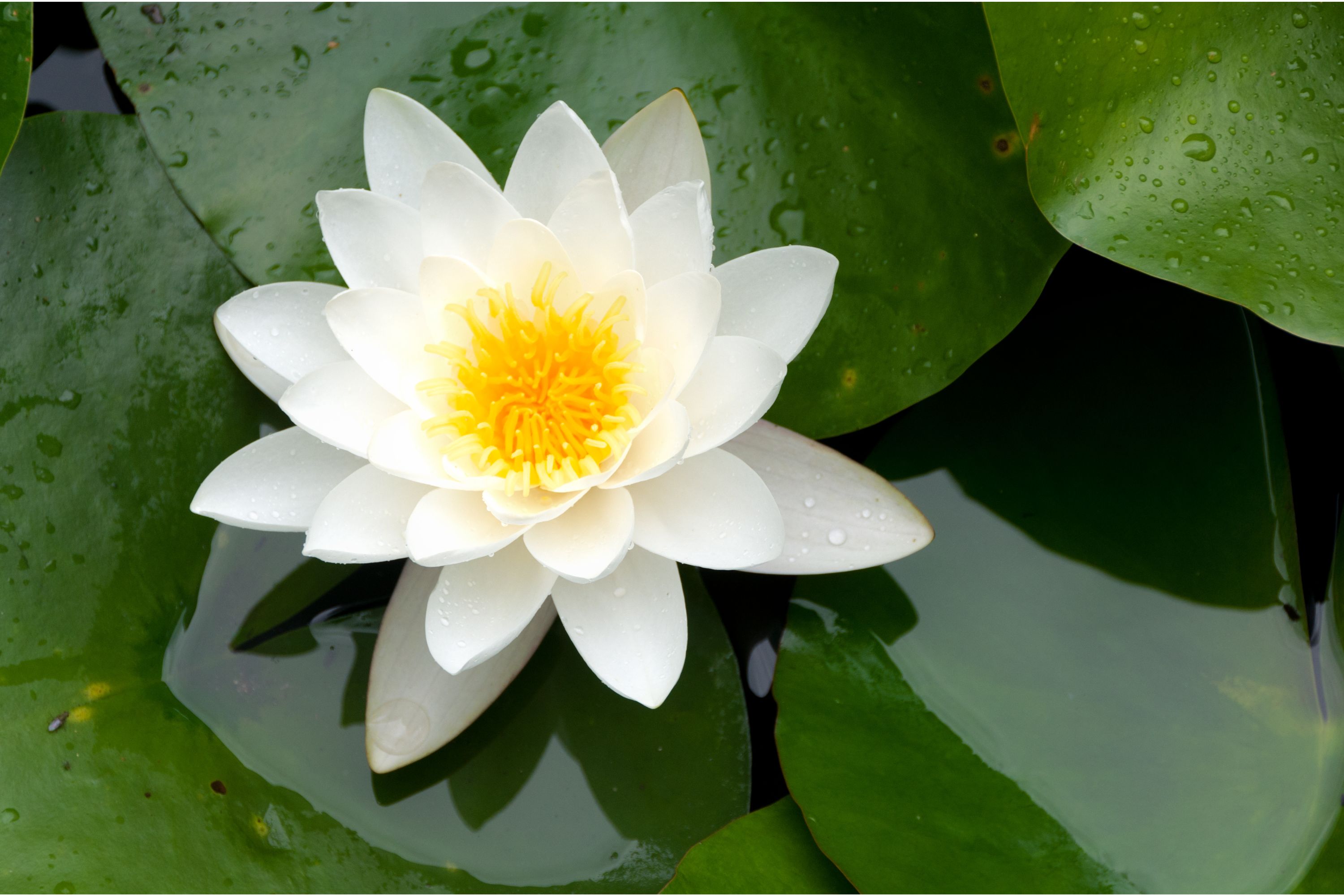White waterlily
(Nymphaea alba)

Description
Nymphaea alba, the white waterlily, European white water lily or white nenuphar /ˈnɛnjʊfɑːr/, is an aquatic flowering plant in the family Nymphaeaceae. It is native to North Africa, temperate Asia, Europe and tropical Asia (Jammu and Kashmir). It grows in water that is 30–150 cm (12–59 in) deep and likes large ponds and lakes. The leaves can be up to 30 cm (12 in) in diameter and take up a spread of 150 cm (59 in) per plant. The flowers are white and they have many small stamens inside It was first published and described by Carl Linnaeus in his book 'Species Plantarum', on page 510 in 1753. The red variety (Nymphaea alba f. rosea) is cultivated from lake Fagertärn ("Fair tarn") in the forest of Tiveden, Sweden, where it was discovered in the early 19th century. The discovery led to large-scale exploitation which nearly made it extinct in the wild before it was protected. Nymphaea candida J. Presl is sometimes considered a subspecies of N. alba (N. alba L. subsp. candida (J. Presl) Korsh.).
Taxonomic tree:







